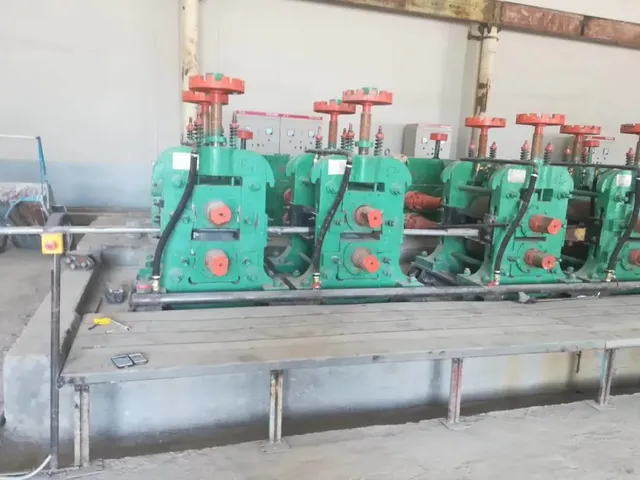
Continuous rolling process:
The continuous rolling mill consists of multiple stands, through which the metal billet is continuously rolled. In each stand, the rollers apply pressure to the metal, gradually reducing the thickness of the metal.
The continuity and stability of the rolling process are guaranteed according to the principle of equal flow per second, that is, the volume of metal passing through each stand per unit time is equal. For example, as the metal enters from one stand to the next, the speed of the rollers will be adjusted accordingly according to the change in metal thickness to ensure that the flow rate of the metal remains consistent, thereby avoiding the phenomenon of steel piling or pulling.
Force and energy parameter control:
During the rolling process, force and energy parameters such as rolling force and rolling torque need to be accurately controlled. The magnitude of the rolling force depends on factors such as the diameter of the roller, the friction coefficient between the roller and the metal, and the deformation resistance of the metal. By adjusting the parameters such as the roller's pressure reduction and rolling speed, the rolling force and rolling torque can be changed, thereby controlling the degree of metal deformation and rolling quality.
Equipment composition
Rolling mill frame:
This is the main part of the continuous rolling mill, which usually includes upper and lower rollers, roller bearings, roller adjustment mechanisms, etc. The material and surface quality of the rollers have an important influence on the rolling effect. For example, the use of high-hardness and high-wear-resistant roller materials can increase the service life of the rollers while ensuring the quality of the metal surface. The roller adjustment mechanism can adjust the gap between the rollers according to different rolling requirements to control the rolling thickness of the metal.
Transmission system:
mainly includes motors, reducers, transmission shafts, etc. The motor provides power for the rolling process, and the reducer is used to convert the high-speed rotation of the motor into the low-speed and high-torque rotation required by the rollers. The transmission shaft transmits power to each roller to ensure that the rollers of each frame run synchronously. In high-speed continuous rolling mills, DC motors or AC variable frequency motors are usually used to achieve precise speed control.
Automation control system:
Modern continuous rolling mills are equipped with advanced automation control systems that can monitor and control various parameters in the rolling process in real time. For example, sensors collect parameters such as rolling force, rolling speed, and metal thickness in real time, and transmit these parameters to the control system for analysis and processing. The control system adjusts the running state of the rolling mill according to the preset control algorithm to ensure the stability of the rolling process and the quality of the product.
Process characteristics
Efficient production:
The continuous rolling mill can realize a continuous and high-speed rolling process, which greatly improves the production efficiency. Compared with the traditional single-stand rolling, the continuous rolling mill can produce a large number of steel products in a short time. For example, in a modern steel production line, the rolling speed of the continuous rolling mill can reach tens of meters or even hundreds of meters per minute.
Stable product quality:
Since the rolling process of the continuous rolling mill is continuous and highly automated, it can ensure that the deformation of the metal in each stand is uniform, so that the quality indicators such as the dimensional accuracy and mechanical properties of the product remain stable. For example, by accurately controlling the rolling process parameters, steel plates or steel strips with a very small thickness tolerance can be produced.